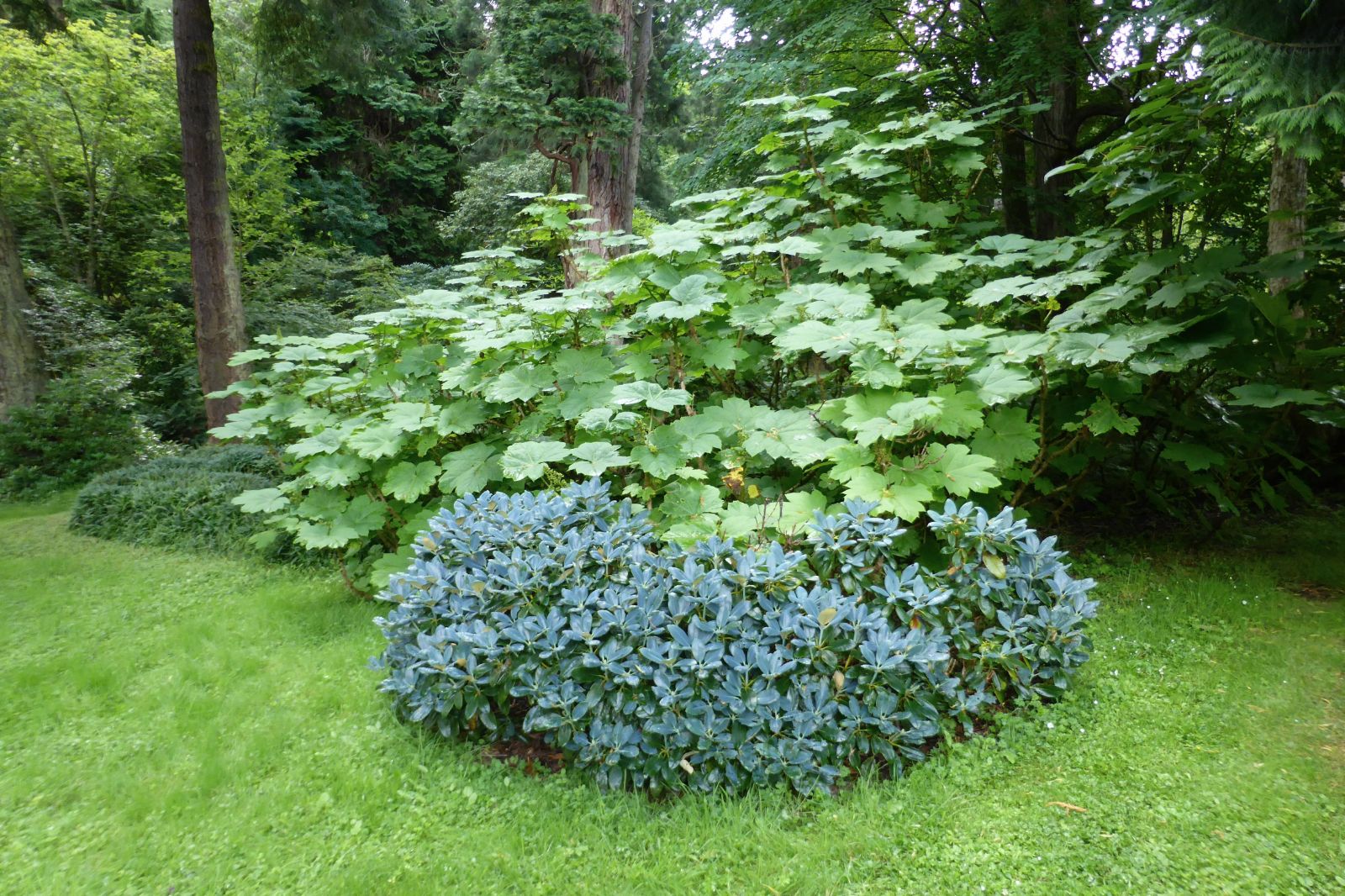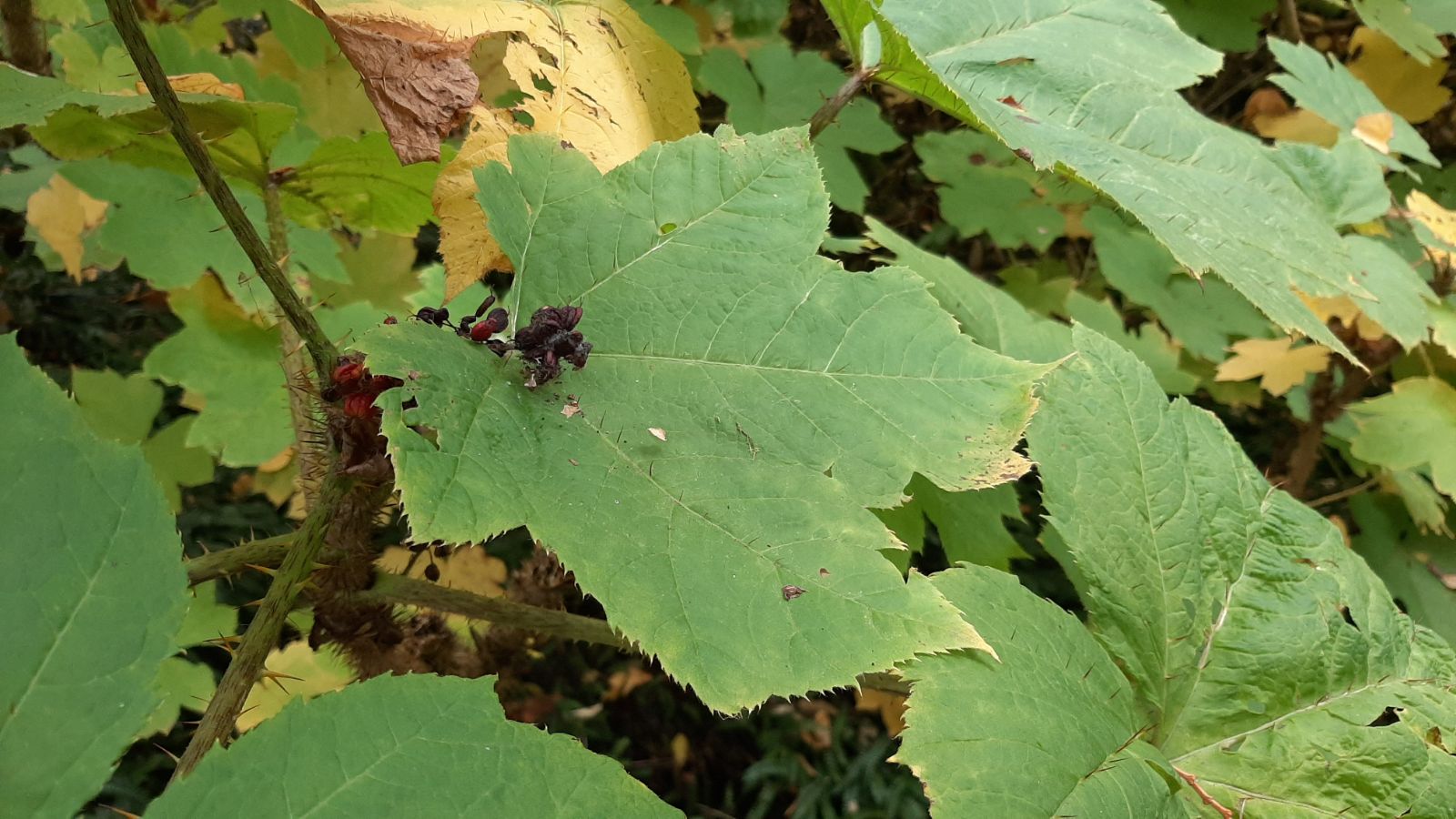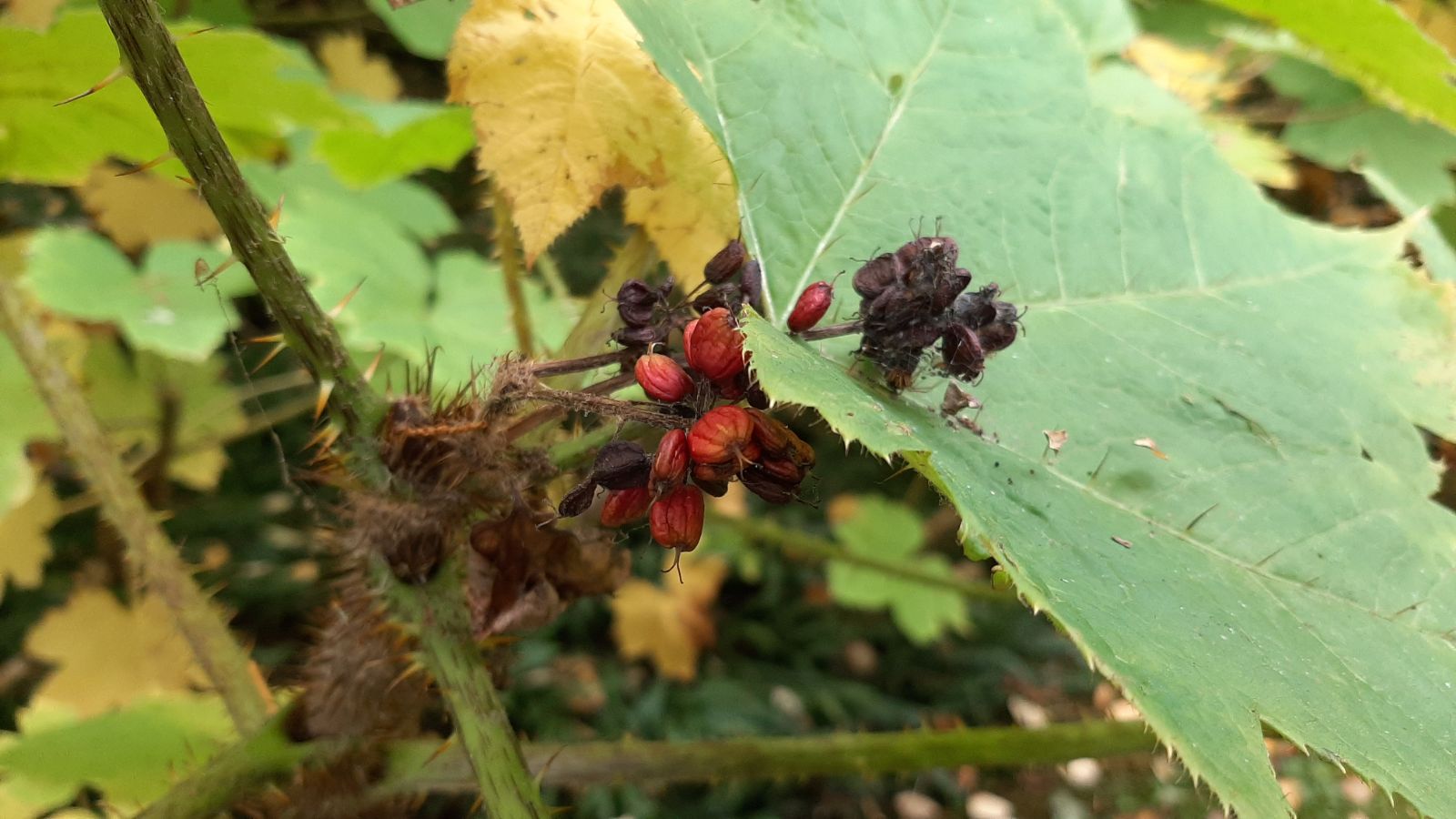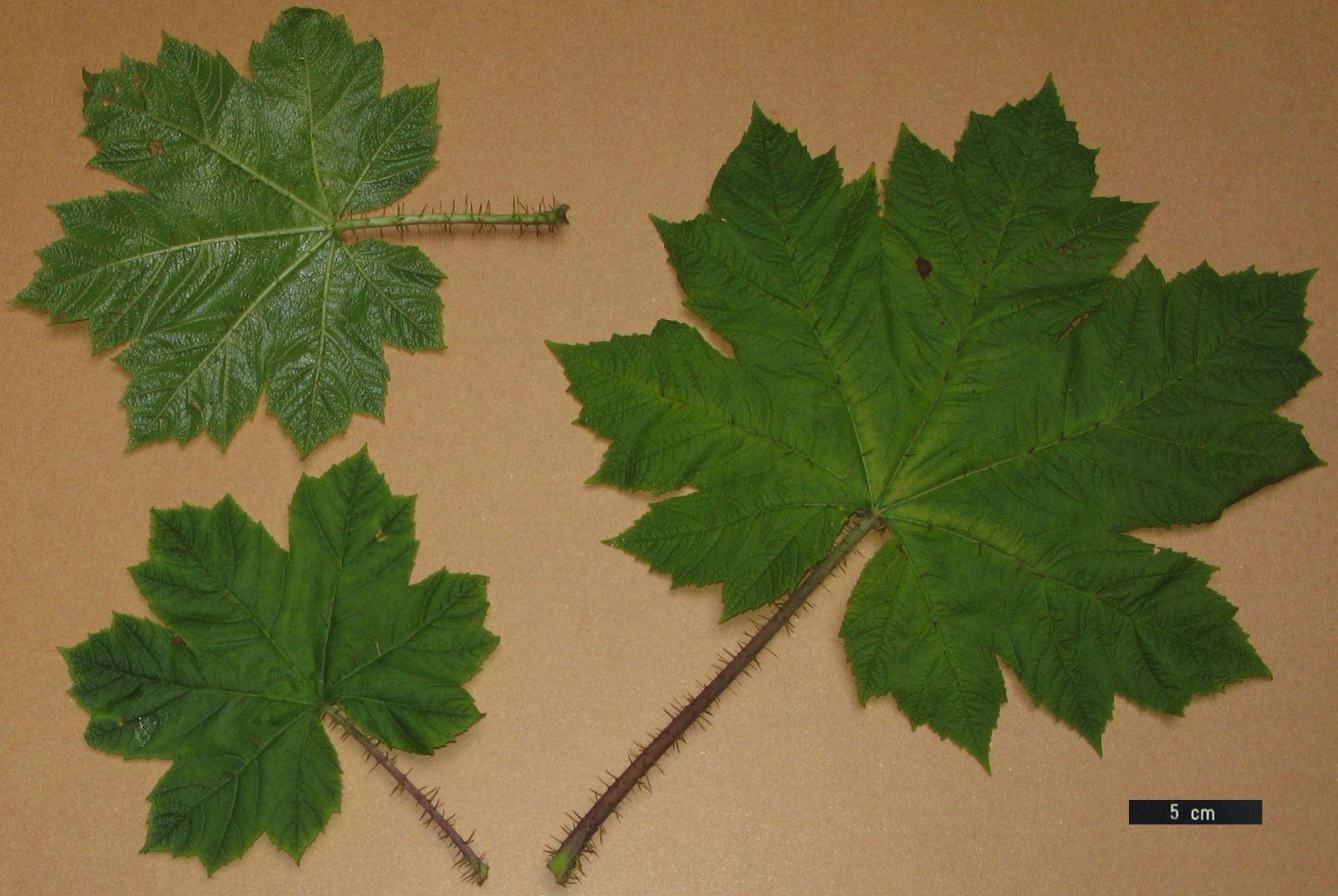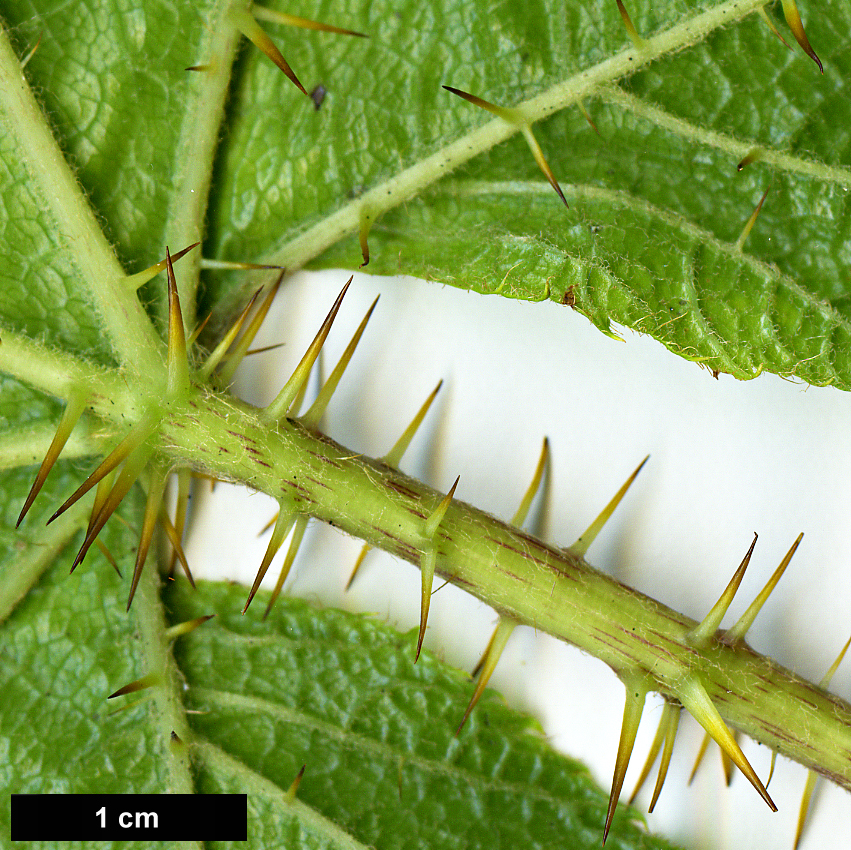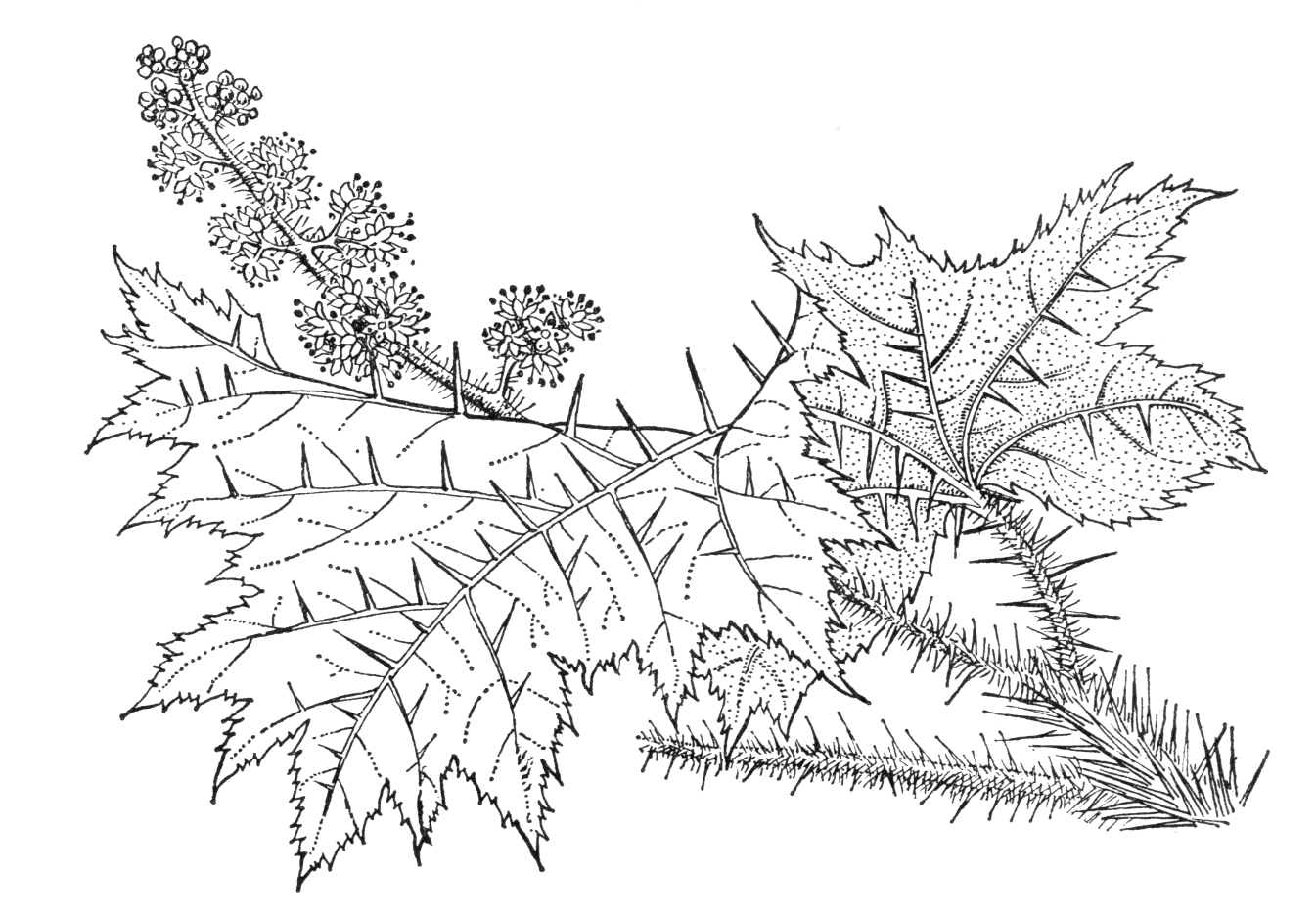Oplopanax horridus
Credits
Article from Bean's Trees and Shrubs Hardy in the British Isles
Recommended citation
'Oplopanax horridus' from the website Trees and Shrubs Online (treesandshrubsonline.
Genus
Synonyms
- Panax horridum Sm.
- Echinopanax horridus (Sm.) J.G. Cooper
- Fatsia horrida (Sm.) S. Wats.
Other taxa in genus
A deciduous shrub up to 10 ft high in the wild, its stems, leaf-stalks, leaf-veins, and inflorescence all armed with slender needle-like prickles. Leaves 7 to 10 in. wide, palmately veined, cordate at the base, shallowly seven- or nine-lobed, doubly serrated; leaf-stalks about as long as the blade. Flowers very shortly stalked or almost sessile, borne in dense umbellate heads, which are arranged in elongated racemes or panicles up to 10 in. long. Fruits red. Bot. Mag., t. 8572.
Native of north-western N. America, in the moister types of forest, where it forms dense entanglements; discovered by Menzies on Nootka Sound during Vancouver’s voyage 1790–5. The date of introduction is uncertain.
If one judged from the climate in which this species is naturally found, it ought to thrive in this country. But owing to the warm soft weather we frequently experience in the early New Year, it starts into growth too soon, and is almost invariably cut by frost when grown in the open, and might succeed better in moist woodland.
Very similar plants occur in Japan, and were for a long time included in O. horridus. They differ from the American plants chiefly in leaf-characters, the blades being smaller, with narrower, long-acuminate lobes, which are themselves acuminately lobulate, while the inflorescences are more weakly spiny. However, at least one N. American specimen in the Kew Herbarium is very similar to those from Japan in these respects, which throws doubts on the validity of these characters. If separated from O. horridus, the Japanese plants would take the name O. japonicus (Nakai) Nakai.
Korean plants have been separated from the American species as O. elatus (Nakai) Nakai. In this the leaves have broader lobes, which are not lobulate; they are toothed as in O. horridus, but the teeth are bristle-tipped, so that the margin appears notably ciliate; in addition the spines in O. elatus are everywhere much shorter than in O. horridus. So far as is known, neither the Japanese nor the Korean species is in cultivation in Britain.

